
These pages are a collection of odd pictures
and trivia about llamas.
(They are not for sale, they are simply for your entertainment.)
View-Master 3D Pictures
You can see the ViewMaster pictures in 3-D if you have a viewer or glasses as shown on page 26.
If you don’t have a viewer to see the 3-D stereoviews, they are also reproduced in anaglyph format
so that they can be seen by using a set of red/blue anaglyph glasses.

If you don’t have any of these glasses lying around,
you can get a set of free anaylph glasses
by sending a stamped self-addressed envelope to this 3-D supply company.
There are also anaglyph glasses in some issues of magazines
that you might have lying around such as
the August 1998 National Geographic or the winter issue of Sports Illustrated.
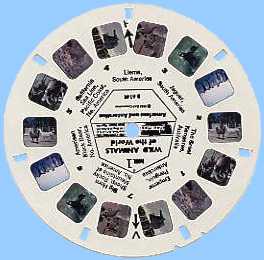
This View-Master reel is from a set titled
“Wild Animals of the World”.
It is reel number B 6141 and the caption reads “Llama, South America”.
Notice how wild they look in the enlarged stereo version below.
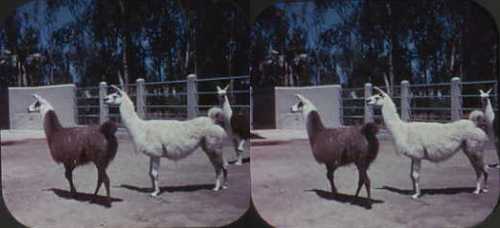
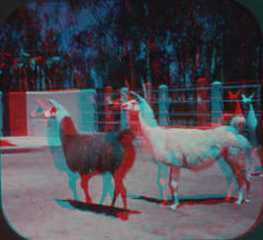
The write-up in the View-Master booklet says:
|
LLAMA
…The south American camel has
been domesticated by man for more
than 2,000 years.
…It feeds and clothes him and is used
as a beast of burden.
…The sure-footed llama can pack 200
pounds of ore down steep mountain
trails. When in a bad mood, it can be
stubborn. If overloaded, it sits down,
spits at the driver, and refuses to move.
|
 |
Some of the information in the View-Master booklet is a little misleading.
Llamas have been domesticated for much longer than 2,000 years,
more like four or five thousand years.
Two hundred pounds would also be too much weight for a llama to carry.
Most people would not put more on than a quarter of the animal’s weight,
so if a llama weighed 400 pounds we would not have it carry more than 100 pounds.
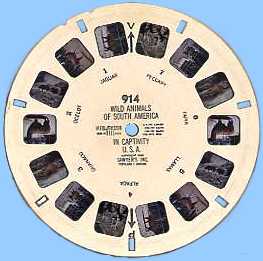
This View-Master reel is number 914, titled
“Wild Animals of South America in Captivity U.S.A.”
It shows a guanco, an alpaca and some llamas.
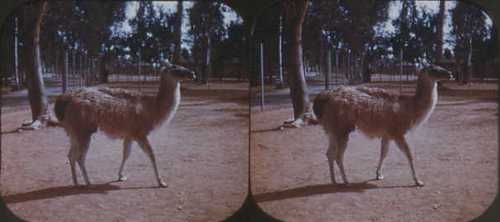
Guanaco
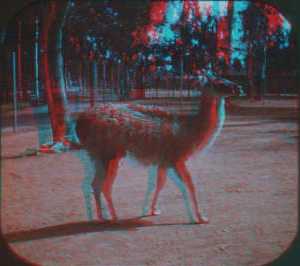
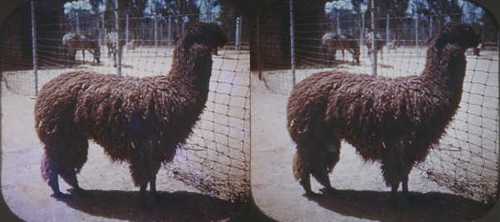
Alpaca
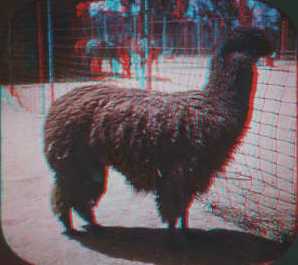
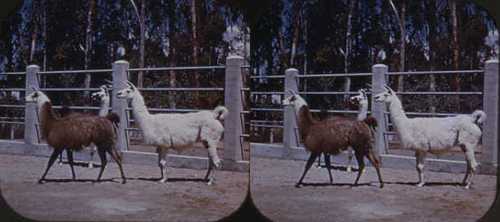
Llamas
(Do you think that this photo was taken at the same time as the one at the top of the page?)
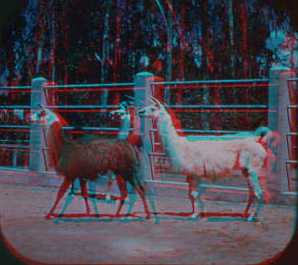
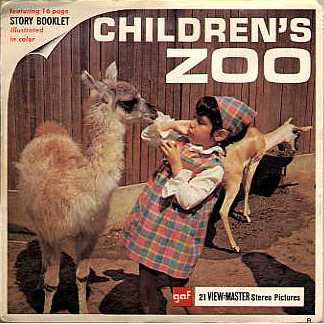
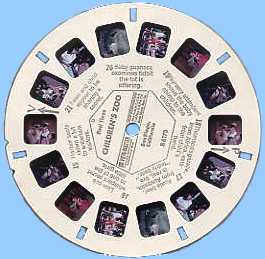
This View-Master reel is titled
“Children’s Zoo”
It is reel number B 6173 and is the third reel in a set of three.
It shows a young girl feeding a baby guanco.
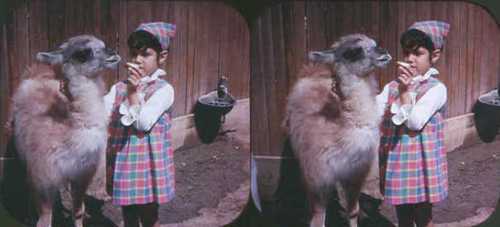
“Baby guanaco examines tidbit the tot is offering.”
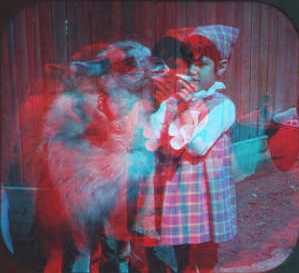
The write-up in the View-Master booklet says:
|
A YOUNG GUANCO
…Even though it doesn’t have a hump, this guanaco from the Andes Mountains of South America is a member of the camel family. All four camel relatives in the New World are humpless. Aside from the wild guanaco, there are his three tame cousins: the llama, used as a pack animal; and the alpaca and vicuna, with long, soft wool, which is valued for weaving into fine, warm cloth.
…It seems unfair to the American camels that the bactrian camel Of Asia got two humps while they got none; and of course, the famous African and Arabian “ship of the desert,” the dromedary camel, has one. Never insult a camel, in the New World or the Old, because one thing they have in common: when angered, they spit!
|
This View-Master package is titled “Bolivia” in the “Nations of the World series”.
It has three reels, the second of which is reel number B 0822
and the caption says “Llamas on the Altiplano”.
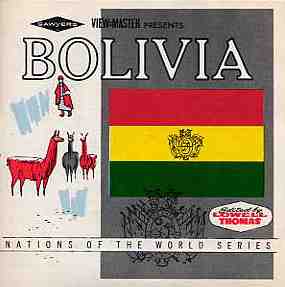
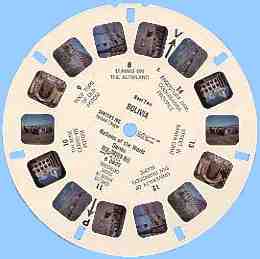
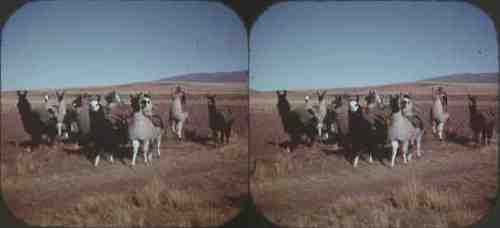
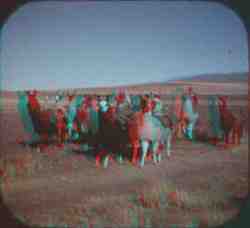
The write-up in the View-Master booklet says:
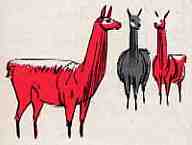
|
Llamas on the Altiplano
The dignified llama, whose expression and bearing often remind one of an outraged spinster, is the all-purpose animal of Bolivia. It gives the Indians milk, meat, leather, and wool, and serves as a beast of burden as well. It is treated well, and its owners even give birthday parties for its newborn.
While the burro, which was introduced by the Spanish, has taken over much of the hauling, and the oxen is used to some extent, the llama is still the favorite. It has been a beast of burden for centuries, and its habitat largely determined the boundary of the Inca empire. strong and sure-footed, it is at home on the steep paths of the cordillera. The Altiplano swarms with countless herds of llamas and vicuñas, perhaps more than any other Andean nation, and these two marvelous beasts exist only in the Andes.
In this scene a llama caravan traverses the Altiplano which is a broad wind-swept plain 12,000 feet above sea level. It covers about 50,000 square miles and stretches some 500 miles south from Lake Titicaca to Argentina. It is broken by deep, wooded gorges, by rises, and by salt marshes. In its center is Lake Poopó which is connected by river with lake Titicaca.
|
The images below are from a View-Master reel Number 622 titled
“Arequipa to Cuzco Peru”
and the caption says “Llama, the beast of burden in the Andes.”
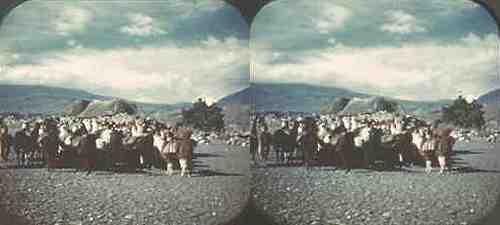
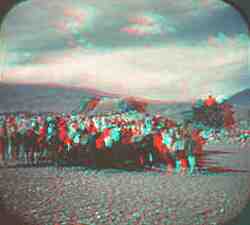
The images below are from a View-Master reel titled
“The Captain Kangaroo Show”
it is reel number B 5652 and the caption says “A llama, from Peru, visits the garden.”
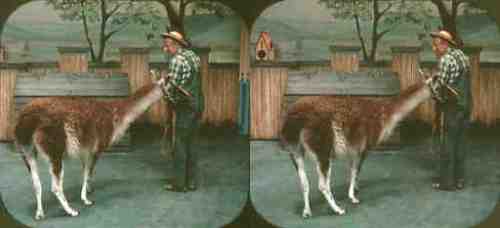
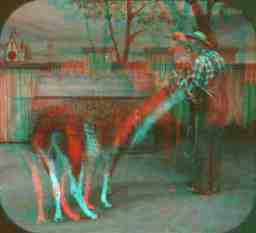
The next images are from a View-Master package titled
“Detroit Zoo”
It is reel number A 5813 and is third in a set of three.
The caption says “South American Llamas at the Belle Isle Children’s Zoo”
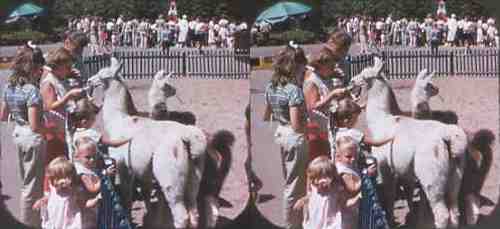
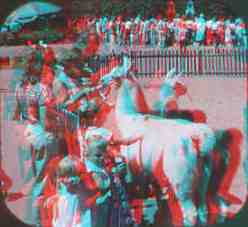
The write-up in the View-Master booklet says:
|
LLAMAS AT THE CHILDREN’S ZOO
A child’s dream comes true in the Children’s Zoo, which is separate from the regular zoo. It is arranged so that children may get close enough to the animals to feed and pet them. Here a pair of llamas are getting a handout from some of their young admirers. Just in front of the llamas is a baby burro, also getting a snack.
|
We also have a page with some new colour stereo pictures of some of our llamas.
More Llama Trivia Pages:
Visit some of our other web pages:

Brian and Jane Pinkerton
29343 Galahad Crescent
Mount Lehman
British Columbia
Canada V4X 2E4
Phone: 604-856-3196
E-mail address: brianp@smartt.com
Mount Lehman Llamas Farm Page • Llama Question and Answer Page • Llama Trivia




























